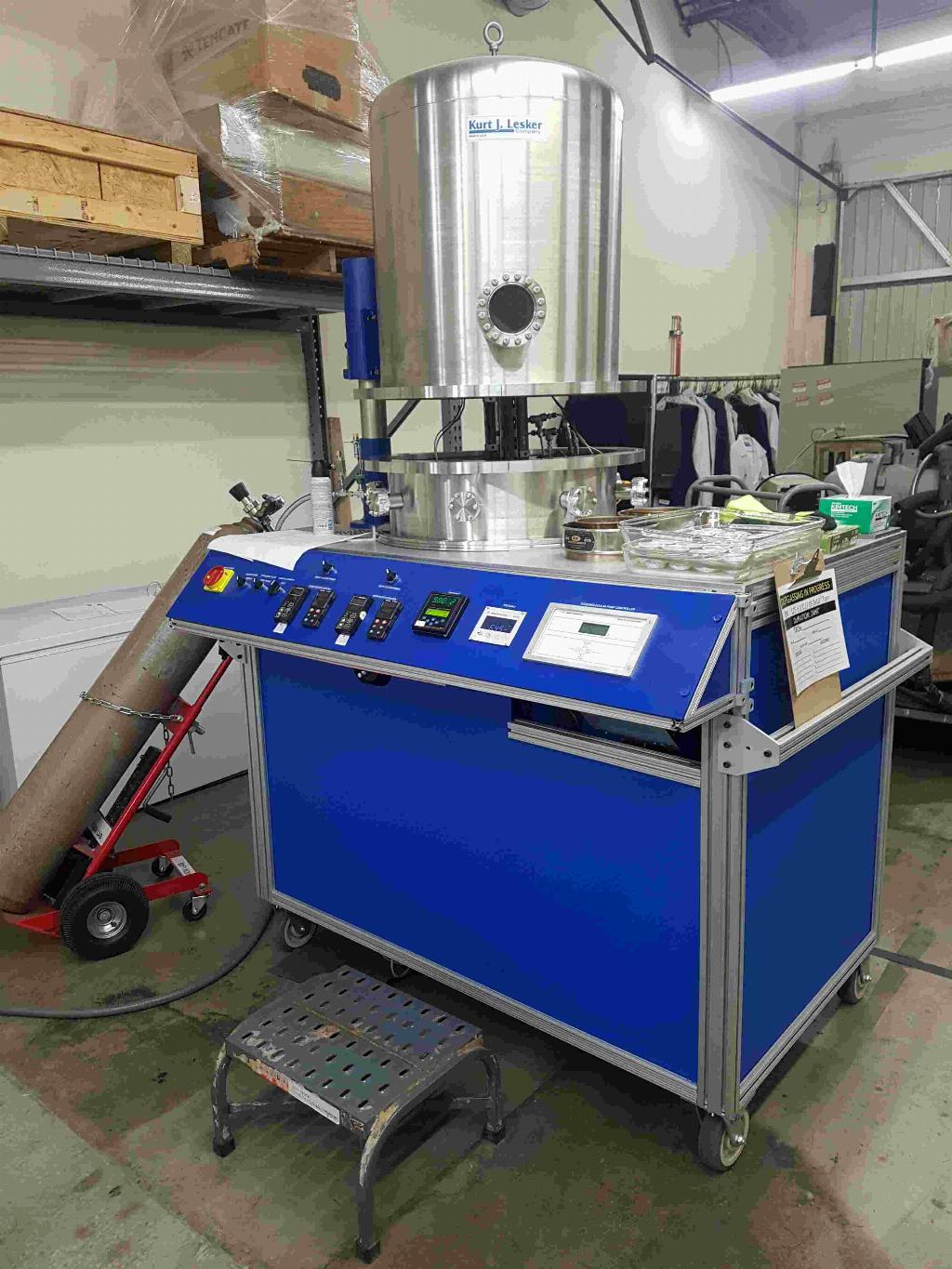Testing out of this world!

Element Materials Technology’s Los Angeles laboratory recently installed a new outgassing chamber to allow for ASTM E595 outgassing testing for the space industry. The company’s technical director-composites, Aerospace West John Moylan, explains more.
The unique environment encountered by orbiting spacecraft necessitates a particular focus on aerospace manufacturing, given that materials perform so differently in space. The impact of the combination of both vacuum and heat causes some component materials to release potentially harmful vapours. These can condense on components within electronic equipment causing issues, such as shorted circuits; or potentially impact the clarity of sensitive optics like telescopes and spectrometers.

Contamination control is essential for spacecraft performance because dust or environmental contamination not only affects the optical performance, but can also cause damage during launch. This is why many spacecraft are assembled in clean rooms in order to mitigate dust and contamination by particulates. However, another form of contamination is molecular, which also has a potentially significant impact on the operation of spacecraft.
Outgassing testing is designed to measure molecular contamination which creates thin films of matter to settle on spacecraft parts. This might occur as a result of volatile materials diffusing out of the samples under space conditions through desorbing or evaporating. It is similar to when you see a film of contamination forming on the inside of the windshield of a new car.
This form of contamination can significantly reduce the performance of lenses and mirrors, which may not be easily cleaned once in orbit. Many spacecraft also contain sensors that need to be maintained at a constant cold temperature, so designers need to balance the thermal loads carefully during the design process. Heat sources can include internal electronics or absorption of solar radiation which then require the spacecraft to be actively cooled through use of radiators. These are devices made or coated with materials that emit more energy than they absorb. Both thermal absorption and thermal emissivity are changed when materials are coated with thin films of contaminants. This can upset the delicate thermal balance of the spacecraft so, inevitably, every effort is made to avoid molecular contamination from occurring.
Developed by NASA and the technical community with the aim of screening low outgassing materials for use in space, ASTM E595 has become the industry standard test for measuring outgassing properties in organic, polymeric and inorganic materials. Its purpose is to determine the amount of volatile content in materials when exposed to a vacuum environment.

Actual contamination depends on geometry, temperatures and other factors and ASTM E595 provides a reproducible method to provide material screening. Samples are subjected to 125°C and less than 10^-5 Torr. While this vacuum level is not as low as in space, it is practical and sufficient that the mean free path of the molecules is longer that the chamber cell dimensions. The exposure is performed in a standard configuration chamber with collection plates maintained at 25°C. Weight loss of the samples and amount of material collected are measured, with the weight loss referred to as Total Mass Loss (TML) and normally expected to be less than 1%. The weight gain of the collector plate is referred to as CVCM. After exposure, material is conditioned at 25°C and 50% RH to determine how much of the weight loss can be assumed to be moisture, known as water vapor regained (WVR).
In performing the test, material samples such as elastomers, coated parts, seals or composites are placed in a clean standard container. The samples are typically 2mm cubes, but other sizes may be used depending on the material being tested, with the minimum useable size being typically 200mg. Throughout the testing process, care is taken to avoid contamination by fingerprints or other laboratory materials. The container and sample are exposed to 23°C and 50% RH for 24 hours, after which the sample and boat are re-weighed and then placed in the outgassing chamber. The boat or containers are arranged on a heating bar that can be maintained at 125°C in the geometry specified.
Each container has a weighed condensation plate at a specified distance and is masked by separator plates to prevent cross-contamination. Once installed the vacuum is applied and once the pressure is below the 5 X 10^-5 Torr target, the heater bar is heated to 125°C and the test then runs for 24 hours. Three specimen compartments are run without samples to provide a control test. After the exposures, samples are weighed, and then exposed to 23°C, 50% RH and re-weighed.
In the Element laboratory in Los Angeles we have recently installed a new outgassing chamber to perform these tests for the spacecraft manufacturing industry. The new chamber has been developed in response to both experience and customer need and has an updated modern controller and a turbo molecular pump that allows us to process these tests efficiently, with a typical turnaround time of less than two weeks.
Outgassing testing allows customers to choose compatible materials that meet the TML and the Collected Volatile Condensable Materials requirements established by NASA and the European Space Agency (ESA). With the development of critical tests like ASTMS E595 and industry developments such as our new outgassing chamber, meeting supply chain requirements is increasingly more reliable and responsive.













